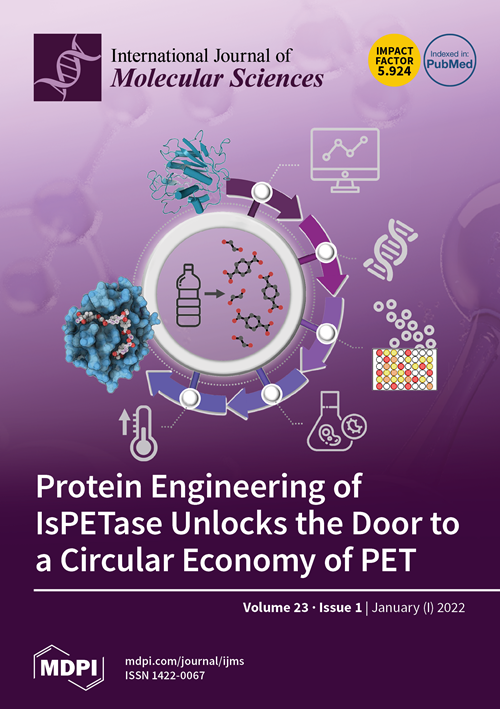Leptin-Mediated Induction of IL-6 Expression in Hofbauer Cells Contributes to Preeclampsia Pathogenesis
IF 4.9
2区 生物学
Q1 BIOCHEMISTRY & MOLECULAR BIOLOGY
引用次数: 0
Abstract
Leptin plays a crucial role in regulating energy homoeostasis, neuroendocrine function, metabolism, and immune and inflammatory responses. The adipose tissue is a main source of leptin, but during pregnancy, leptin is also secreted primarily by the placenta. Circulating leptin levels peak during the second trimester of human pregnancy and fall after labor. Several studies indicated a strong association between elevated placental leptin levels and preeclampsia (PE) pathogenesis and elevated serum interleukin-6 (IL-6) levels in PE patients. Therefore, we hypothesized that a local increase in placental leptin production induces IL-6 production in Hofbauer cells (HBCs) to contribute to PE-associated inflammation. We first investigated HBCs-specific IL-6 and leptin receptor (LEPR) expression and compared their immunoreactivity in PE vs. gestational age-matched control placentas. Subsequently, we examined the in vitro regulation of IL-6 as well as the phosphorylation levels of intracellular signaling proteins STAT3, STAT5, NF-κB, and ERK1/2 by increasing recombinant human leptin concentrations (10 to 1000 ng/mL) in primary cultured HBCs. Lastly, HBC cultures were incubated with leptin ± specific inhibitors of STAT3 or STAT5, or p65 NF-κB or ERK1/2 MAPK signaling cascades to determine relevant cascade(s) involved in leptin-mediated IL-6 regulation. Immunohistochemistry revealed ~three- and ~five-fold increases in IL-6 and LEPR expression, respectively, in HBCs from PE placentas. In vitro analysis indicated that leptin treatment in HBCs stimulate IL-6 in a concentration-dependent manner both at the transcriptional and secretory levels (p < 0.05). Moreover, leptin-treated HBC cultures displayed significantly increased phosphorylation levels of STAT5, p65 NF-κB, and ERK1/2 MAPK and pre-incubation of HBCs with a specific ERK1/2 MAPK inhibitor blocked leptin-induced IL-6 expression. Our in situ results show that HBCs contribute to the pathogenesis of PE by elevating IL-6 expression, and in vitro results indicate that induction of IL-6 expression in HBCs is primarily leptin-mediated. While HBCs display an anti-inflammatory phenotype in normal placentas, elevated levels of leptin may transform HBCs into a pro-inflammatory phenotype by activating ERK1/2 MAPK to augment IL-6 expression.瘦素介导的霍夫鲍尔细胞 IL-6 表达诱导子痫前期发病机制
瘦素在调节能量平衡、神经内分泌功能、新陈代谢以及免疫和炎症反应方面发挥着至关重要的作用。脂肪组织是瘦素的主要来源,但在怀孕期间,瘦素也主要由胎盘分泌。循环瘦素水平在人类怀孕的后三个月达到峰值,并在分娩后下降。多项研究表明,胎盘瘦素水平升高与子痫前期(PE)发病机制和子痫前期患者血清白细胞介素-6(IL-6)水平升高之间存在密切联系。因此,我们假设胎盘瘦素分泌的局部增加会诱导霍夫鲍尔细胞(HBCs)产生 IL-6,从而导致 PE 相关炎症。我们首先研究了HBCs特异性IL-6和瘦素受体(LEPR)的表达,并比较了它们在PE与胎龄匹配的对照胎盘中的免疫反应。随后,我们通过增加原代培养 HBCs 中重组人瘦素的浓度(10 至 1000 ng/mL),检测了 IL-6 的体外调节以及细胞内信号蛋白 STAT3、STAT5、NF-κB 和 ERK1/2 的磷酸化水平。最后,将 HBC 培养物与瘦素和 STAT3 或 STAT5 或 p65 NF-κB 或 ERK1/2 MAPK 信号级联的特异性抑制剂一起培养,以确定瘦素介导的 IL-6 调节所涉及的相关级联。免疫组化显示,PE 胎盘的 HBC 中 IL-6 和 LEPR 的表达分别增加了 ~3 倍和 ~5 倍。体外分析表明,瘦素处理的 HBCs 可在转录和分泌水平上以浓度依赖的方式刺激 IL-6(p < 0.05)。此外,瘦素处理的 HBC 培养物显示 STAT5、p65 NF-κB 和 ERK1/2 MAPK 的磷酸化水平显著升高,用特异性 ERK1/2 MAPK 抑制剂预孵育 HBC 可阻断瘦素诱导的 IL-6 表达。我们的原位研究结果表明,HBCs 通过提高 IL-6 的表达促进了 PE 的发病机制,体外研究结果表明,HBCs 中 IL-6 表达的诱导主要是由瘦素介导的。虽然正常胎盘中的 HBCs 显示出抗炎表型,但瘦素水平的升高可能会通过激活 ERK1/2 MAPK 来增强 IL-6 的表达,从而将 HBCs 转变为促炎表型。
本文章由计算机程序翻译,如有差异,请以英文原文为准。
求助全文
约1分钟内获得全文
求助全文
来源期刊

International Journal of Molecular Sciences
Chemistry-Organic Chemistry
CiteScore
8.10
自引率
10.70%
发文量
13472
审稿时长
17.49 days
期刊介绍:
The International Journal of Molecular Sciences (ISSN 1422-0067) provides an advanced forum for chemistry, molecular physics (chemical physics and physical chemistry) and molecular biology. It publishes research articles, reviews, communications and short notes. Our aim is to encourage scientists to publish their theoretical and experimental results in as much detail as possible. Therefore, there is no restriction on the length of the papers or the number of electronics supplementary files. For articles with computational results, the full experimental details must be provided so that the results can be reproduced. Electronic files regarding the full details of the calculation and experimental procedure, if unable to be published in a normal way, can be deposited as supplementary material (including animated pictures, videos, interactive Excel sheets, software executables and others).
 求助内容:
求助内容: 应助结果提醒方式:
应助结果提醒方式:


